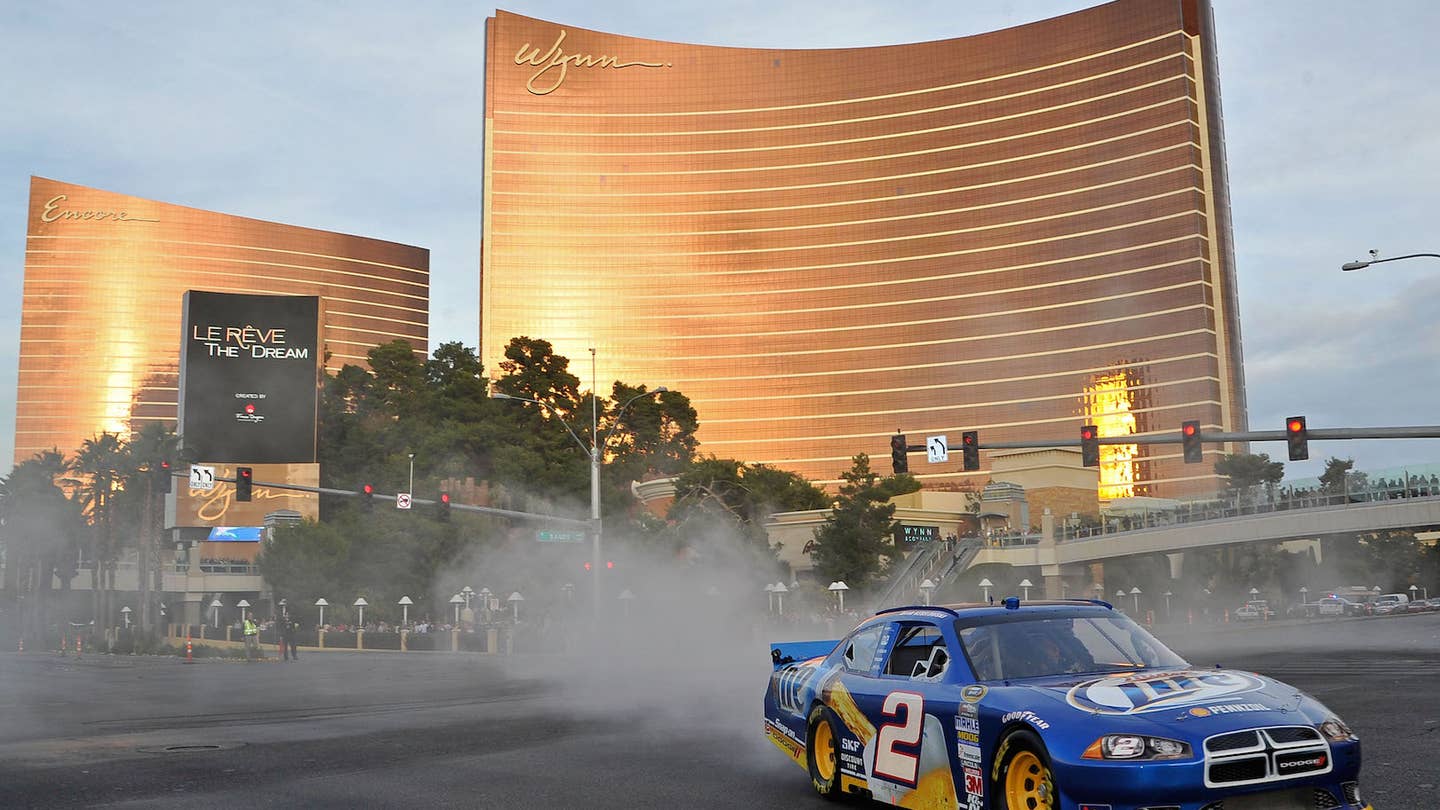Dodge Wants Back into NASCAR? Fine. But What Now?
Returning to the sport isn’t as easy as you think.

August 7, 2012: Dodge announces that it is leaving the NASCAR Sprint Cup series (no, we’re not ready to call it the NASCAR Monster Energy Cup series yet). Then Dodge, driver Brad Keselowski and team owner Roger Penske go on to win the 2012 championship. This leaves Chevrolet, Toyota and Ford to compete in 2013 and beyond.
December 4, 2016: Fiat Chrysler CEO Sergio Marchionne, at Daytona International Speedway as part of the Ferrari Challenge World Finals, was asked at a press conference if Dodge would be interested in returning to NASCAR. Stunningly, he said, “Yes, I’d love to. I talked to Jim France (executive vice-president of NASCAR) about this just last night.”
Since Marchionne was the one who pulled Dodge out of NASCAR, having him say—with surprising conviction—that he wants back in the sport caught most everyone, including Dodge executives in Detroit, by surprise. But if there’s one thing we’ve learned since the sweater-wearing Sergio took over the bankrupt company: When Sergio says jump, your next question is, “How high?”
So now the question is: How does Dodge get back into NASCAR?
It’s a lot more complicated than it sounds. No manufacturer has re-joined NASCAR in this current era, so the path back isn’t clear.
The last two manufacturers to enter NASCAR from scratch, Dodge and Toyota, did it the same way: They started small, in the NASCAR Camping World truck series, where they learned how travel back in time and build durable pushrod V8 engines, bolted to four-speed manual transmissions. But mostly they learned how things work in NASCAR – rules that aren’t in the rule book. When it came time to move up to the Cup series, they did.
With Dodge, the company’s progress made for a great story: The effort was largely financed by dealers, so they had a stake in the success of Dodge’s effort. There was a countdown clock introduced at a press conference, logging the days, hours and minutes until Dodge hit the track. It was a success on every level – Dodge was selling cars and trucks, meaning the dealers were selling cars and trucks.
And then they weren’t. As Marchionne said, NASCAR seemed like a luxury the struggling company could no longer afford, even though the investment had shrunk to, essentially, one two-car Penske team.
Actually, there was a lot more to the decision to stop racing than just Marchionne’s veto: There was no comparable alternative to Penske, which had announced it was moving to Ford. Dodge struck a deal with Michael Andretti to build a team around Kurt Busch, but at the last minute that was cancelled.
Soon, that began to seem like business as usual at Dodge, which rallied around its Viper team in the American Le Mans Series – just as they did in NASCAR, they won the season championship, and promptly shuttered the team and fired the champion driver. Then they spent a little money on the Trans Am series, then that went away. Only Mopar, Chrysler’s parts arm, remains in racing now, mostly in drag racing. There are a few Dodges still racing in the NASCAR Xfinity and truck series, and the ARCA series, but those are leftovers that have no factory backing.
So now what? Presumably Dodge knows the rules. Would they be willing to re-enter NASCAR through the truck series, or would they insist to jumping straight back into Cup?
Since we broke the story on Marchionne’s remarks, the rumor mill has been churning out scenarios non-stop, many of them absolutely improbable. The single biggest problem that faced Dodge at the end of 2012 was engines – unlike Toyota, Dodge was not in a position to build its own engines, and certainly Penske wasn’t going to continue building Dodge engines while the ran Fords, though that scenario was actually discussed.
Same problem now. You can count winning NASCAR engine builders on one hand. Does Dodge have enough money to, say, convince Rick Hendrick to switch from Chevrolet to Dodge. No, they don’t.
Certainly Dodge can find somebody to build their engines, but they’d have to be developed to current specifications, and quite a bit has changed since Dodge left NASCAR, including the switch from carburetors to fuel injection.
Common sense tells us that this would be expensive, and a long process as the Dodge team, or teams, got up to speed: If Dodge’s main objective is to just show up with a presence, it wouldn’t be hard to sign a second- or third-tier team to run Dodges – after all, if the team has a couple of charters, they’d be guaranteed starting spots, and suddenly there’s Dodges in the starting lineup, albeit in row 15.
But would that be enough to satisfy Marchionne, who is known to keep a close eye on the purse strings? There would have to be some sort of come-to-Jesus talk with Sergio, and a budget set: Here’s what it would cost to show up, and here’s what it would cost to win.
There would be a big difference in those two numbers.
NASCAR depends to the manufacturers to promote the sport – NASCAR’s own promotions tend to preach to the choir, but manufacturers can introduce the sport to non-fans. NASCAR misses Dodge, and needs it back. Volkswagen came close to launching a NASCAR program, but with the cutback related to the diesel debacle, that won’t happen. With a new title sponsor and broadcast rights looming, having a fourth brand committed to rejoining the series would be a substantial shot in the arm.
I think it will happen; 2018 is possible, 2019 is probable. Let’s get the countdown clock started again.
